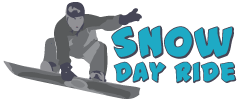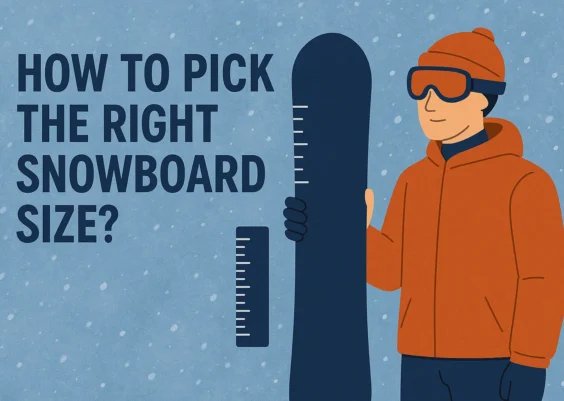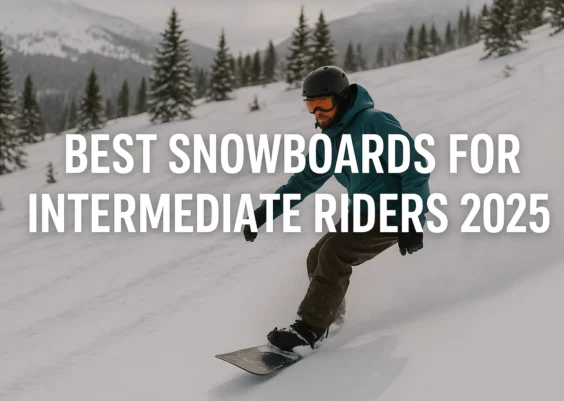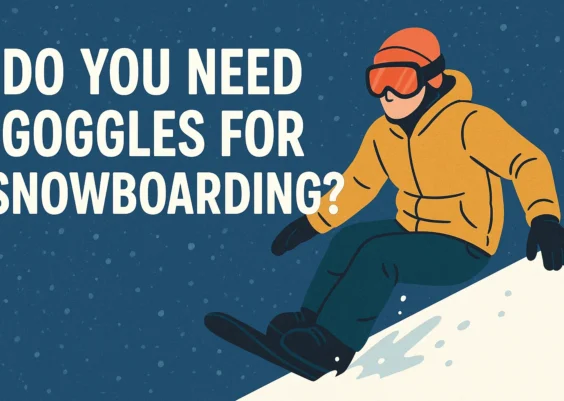Quick Facts
- Longer snowboards feel stable but demand more effort to control.
- Beginners often struggle to turn longer boards at slower speeds.
- Heavier riders sometimes need extra length for proper balance.
- Shorter boards usually help beginners learn faster and with less stress.
- The right size depends on rider weight, height, and learning goals.
Snowboard size has a direct effect on how quickly beginners learn. A longer snowboard feels stable underfoot, which sounds good at first. But for someone just starting out, stability comes with a trade-off. The board is harder to turn, heavier to manage, and less forgiving when mistakes happen.
New riders often find themselves fighting the board rather than enjoying the ride. For most beginners, a shorter snowboard makes learning smoother and less tiring.
In this guide, we’ll break down why longer boards are rarely the best starting point, when they can still work, and how to pick the right size for faster progress.
Answered: Is a Longer Snowboard Better for Beginners?
A longer snowboard is usually not better for beginners. While the extra length provides stability at high speeds, most new riders never reach those speeds in their first season. Instead, they spend time on gentle slopes where turning and control matter more. Longer boards require more force to pivot and are less forgiving when edges catch, which makes falls more common.
For beginners, the main goal is to build confidence and learn basic turns. Shorter boards allow smoother, quicker responses that help riders progress faster. Longer boards only make sense for heavier beginners who need extra surface area for balance.
Why Snowboard Size Matters for Beginners?
Snowboard length controls how easy it is to balance, turn, and stop. For beginners, these three skills matter more than speed or powder performance. A longer snowboard spreads weight over more surface, which adds stability but slows down turning. A shorter board, in contrast, reacts faster and lets beginners correct mistakes with less effort.
Charts often suggest sizing by weight. For example, a rider at 150 pounds may match a 154–156 cm board. But for beginners, going 2–4 cm shorter makes learning smoother. This small adjustment reduces falls, speeds up skill development, and helps riders enjoy their first days on snow instead of fighting the board.
Benefits of Riding a Longer Snowboard
A longer snowboard has clear strengths, even for beginners in certain cases. The extra length increases surface area, which gives more stability at higher speeds. Riders feel less wobble when pointing straight down a run.
Longer boards also hold an edge better on icy or hard-packed snow. This makes carving smoother once basic turning skills are learned. In deep powder, the extra length helps the board float, so the rider doesn’t sink as quickly.
For taller or heavier beginners, a longer board may actually be the right fit. For example, someone weighing 200 pounds will struggle on a 150 cm board but may feel balanced on a 162 cm board.
Drawbacks of Longer Snowboards for Beginners
Longer snowboards demand more strength to turn. Beginners often find them heavy and slow to react, which makes linking turns harder. This extra effort can be tiring after just a few runs.
Another drawback is forgiveness. A longer board punishes small mistakes more quickly. Catching an edge on a long board often leads to harder falls, which can discourage new riders.
Longer boards also slow down the learning curve. Instead of focusing on improving balance and confidence, beginners end up fighting the board. For most riders, a slightly shorter size creates a smoother, safer start.
Are Shorter Snowboards Better for Beginners Instead?
For most beginners, shorter snowboards are the easier choice. They turn faster, weigh less, and feel more forgiving when mistakes happen. A shorter board helps riders practice balance and link turns without the heavy effort longer boards require.
Instructors often suggest sizing 2–4 cm below the standard chart. For example, a rider weighing 160 pounds might do well on a 154 cm board instead of 158 cm. That small reduction makes the board easier to manage on gentle slopes.
Once a rider builds confidence and control, moving up to a longer board becomes more practical for speed, carving, or powder.
Choosing the Right Length as a Beginner
Finding the right snowboard size is not about longer or shorter alone. Beginners should focus on balance, ease of turning, and comfort. These points help narrow it down:
Rider’s Height and Weight
Weight is the most reliable factor. For example:
| Rider Weight (lbs) | Beginner-Friendly Length (cm) |
|---|---|
| 100–120 | 138–144 |
| 120–140 | 142–148 |
| 140–160 | 148–154 |
| 160–180 | 152–158 |
| 180–200 | 158–164 |
| 200+ | 162+ |
Skill Level
- New riders: Go 2–4 cm shorter than the standard chart.
- Confident learners: Standard length works if control is not a problem.
Riding Style
- Park or freestyle goals: Shorter boards are better for tricks and spins.
- Groomers: Mid-length offers smoother learning and comfort.
- Powder plans: Longer boards provide float but can slow progress at first.
Boot Size and Width
Large boots (US size 11 or higher) often require wide boards. Too narrow and the toes or heels drag in turns.
Terrain Goals
Think about where you’ll ride most. Resorts with groomed runs favor shorter boards for control. Areas with deeper snow may justify longer boards, especially for heavier riders.
FAQs
What happens if I start with a longer snowboard?
You’ll feel more stability at speed, but turning will be harder and slower. Beginners often struggle and progress more slowly.
Can heavier beginners learn on longer boards?
Yes. A heavier rider needs more surface area for balance. A longer board can be the right choice in this case.
Is it dangerous to learn on a longer board?
Not dangerous, but less forgiving. Mistakes often lead to harder falls compared to shorter boards.
What size snowboard is easiest for new riders?
Usually 2–4 cm shorter than the standard chart for your weight range.
Do beginners ever need a longer snowboard?
Yes, if the rider is tall or over 200 pounds, longer boards help with stability and float.
A longer snowboard gives stability and float, but that does not make it the best choice for beginners. New riders usually progress faster on shorter boards because they are easier to turn, lighter to control, and more forgiving of mistakes.
Longer boards can make sense for heavier or taller beginners, but for most riders, starting shorter is the smarter path. Once skills improve, moving toward a longer board becomes useful for carving at speed and riding powder.
The best beginner snowboard is one that matches body weight, boot size, and learning goals-not simply a longer board.




